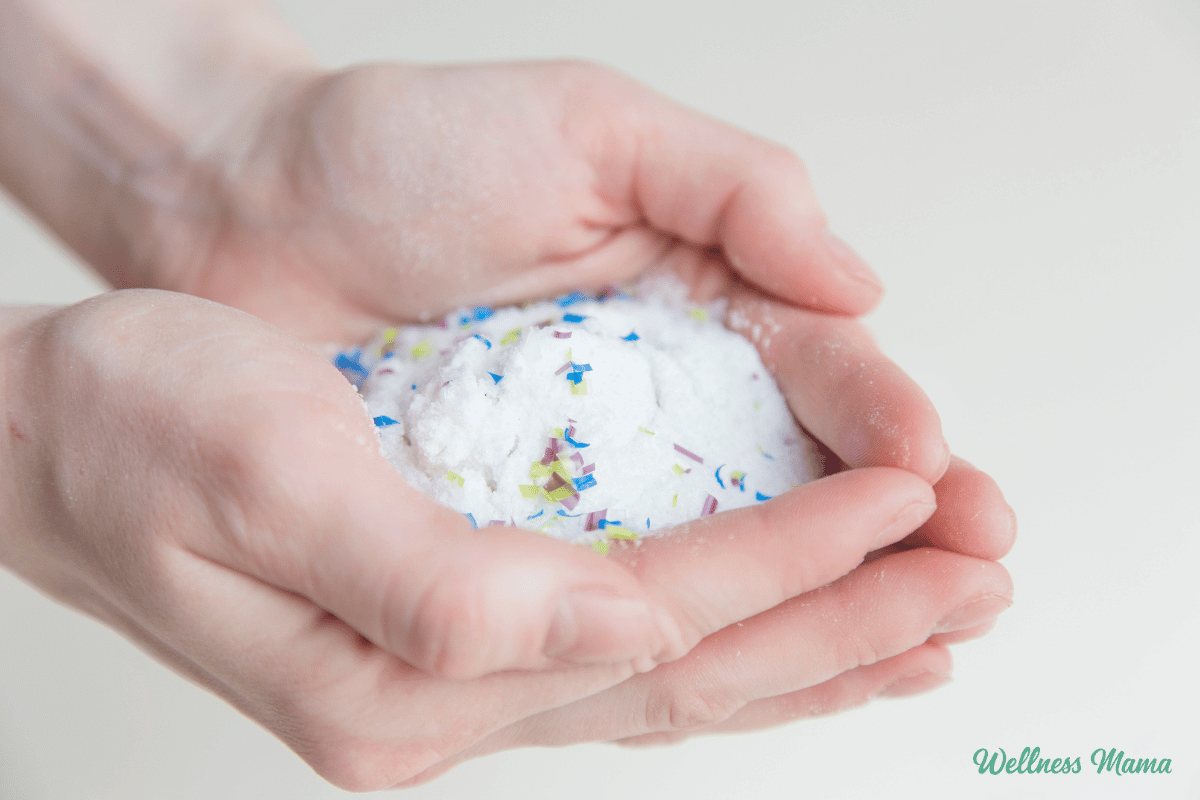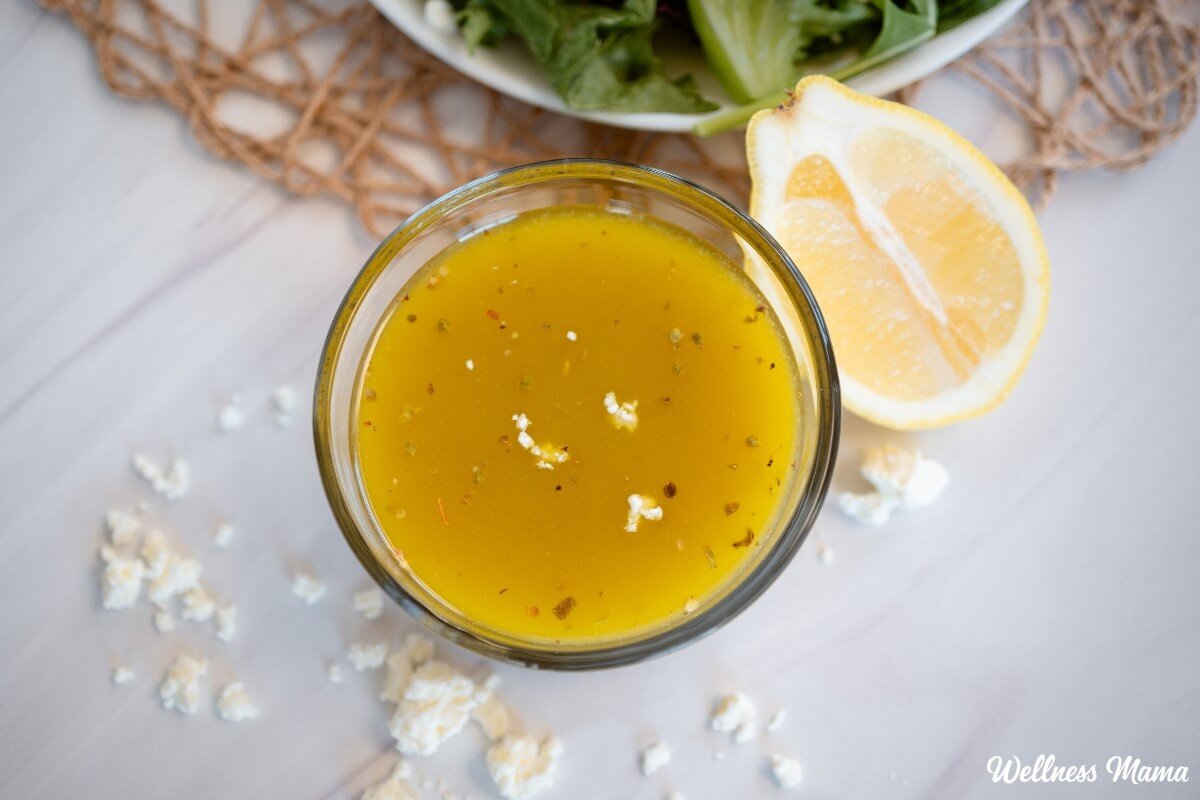There are few subjects as debated as safe sun exposure. Sunbathing and tanning often receive negative attention, but growing research suggests that moderate sun exposure is not only safe but essential. Recent comprehensive research indicates that avoiding sun exposure may pose risks similar to smoking in terms of overall mortality. In simple terms, shunning sunlight could be as harmful as smoking cigarettes!
Is Sun Exposure Safe?
Let’s all take a moment to breathe and reflect. As I mentioned earlier, this topic is contentious. I’m here to share what I’ve learned through personal research and blood tests on myself and my family.
It’s important to recognize that anecdotal evidence doesn’t equal proof. Consider these examples:
-
If you know someone who succumbed to skin cancer, you might believe all sun exposure is harmful, despite the lack of scientific support and the fact that it doesn’t confirm causation.
- If you know someone who spent their entire life outdoors, frequently got sunburned, but never developed cancer, you might conclude that all sun exposure is safe. Again, science doesn’t support this.
Everyone knows someone impacted by cancer, and I extend my condolences to those who’ve lost loved ones to this disease. However, knowing someone who died from cancer doesn’t constitute a scientific study. I know an individual who had minimal sun exposure, always wore a hat and sunscreen, yet still developed skin cancer on his nose. This case is likewise scientifically insignificant.
A lot depends on your skin pigmentation. As someone with Northern European ancestry, I have less melanin in my skin, so I likely require less UV exposure to generate vitamin D than someone with darker skin. Existing evidence suggests that a certain amount of sun exposure is safe for most people. However, those with darker skin may need more sunlight to maintain adequate vitamin D levels, while some research raises concerns about certain sunscreen ingredients possibly increasing skin cancer risk. But let’s delve deeper…
Sunscreen, Sunburn, and Skin Cancer, Oh My!
In recent decades, the campaign to use sunscreen and limit sun exposure has intensified. Sunscreens now offer an SPF of up to 100! Due to extensive public health efforts, most people are somewhat aware of the perceived dangers of sun exposure.
Surprisingly, sun exposure might not be as hazardous as we think. Avoiding the sun could be riskier than getting moderate sun. Despite recommendations to use sunscreen and limit sun exposure, skin cancer rates, particularly melanoma, continue to rise.
From 2010-2019, skin cancer rates increased annually by 1.2%, despite people spending less time outside and using more sunscreen. We’re following the advised measures, yet the issue worsens.
But is Sun Exposure the Reason?
The plot thickens here. Perhaps the issue isn’t a lack of sunscreen or sun exposure but a deeper underlying cause. A 2023 review revealed that while sunburn is harmful, moderate, non-burning sun exposure has many advantages, even without sunscreen.
The review identified several benefits:
- A significant drop in blood pressure for those with hypertension.
- Improvement in symptoms for those with chronic kidney disease.
- Reduced inflammation.
- Lower rates of cardiovascular disease.
- Improvement in skin conditions like eczema.
Researchers are increasingly examining the benefits of sunlight and the detriments of insufficient sunlight exposure. In essence, not getting enough sun can be as harmful or even more harmful than excessive sun exposure. As with many things in life, it’s the dosage that determines harm.
And Sunscreen May NOT Help Avoid Cancer
Many believe sunscreen prevents sunburn and thus skin cancer, but research does not corroborate this belief.
Not only does sunscreen not prevent skin cancer, but it may also inhibit some of the most beneficial aspects of sun exposure. While it can prevent or decrease the chances of sunburn, it might also hinder the body’s ability to produce vitamin D from cholesterol in skin cells.
Vitamin D deficiency remains widespread. As of 2010, over a billion people across the globe had vitamin D levels that were deficient or insufficient.
A 2016 review concluded, “We find no consistent evidence that chemical sunscreens reduce the risk of melanoma.” The authors even suggested sunscreen labels include a warning!
The review stated, “Since health authorities recommend liberal sunscreen use, labels should warn about possible vitamin D deficiency from excessive sunscreen use. They should also state that sunscreens have not been proven to reduce melanoma risk.”
A study in the Journal of Clinical Pharmacology and Therapeutics reached a similar conclusion:
“Sunscreens protect against sunburn, but there is no evidence that they safeguard against basal cell carcinoma or melanoma. Problems arise from behavior where individuals use sunscreens to extend sun exposure longer than they otherwise would. At this stage, vitamin D inhibition is unlikely due to insufficient use by individuals. There are concerns about sunscreen safety, and companies have emotionally pushed for sunscreen use inaccurately.”
Nevertheless, preventing sunburn is wise. However, the efficacy of sunscreen as the best prevention method is debatable.
Sunscreen DOES Block Vitamin D From the Sun
We know that sunscreen can impede our bodies’ ability to naturally produce vitamin D, especially with regular use. Sunscreen shields against ultraviolet B (UVB) wavelengths, which are essential for vitamin D synthesis.
Societally, we often avoid the sun despite the necessity of sunlight for natural vitamin D production. Then we rely on chemical-laden sunscreen to lower cancer (skin cancer) risks.
Ironically, this practice could spur vitamin D deficiency and elevate the risk of various chronic health issues. As previously noted, studies show sunscreen doesn’t truly prevent melanoma.
Why Safe Sun Exposure May REDUCE Cancer Risk
The most thorough studies do not recommend shunning the sun. On the contrary, recent reviews advocate for non-burning sun exposure for everyone sufficient to maintain blood vitamin D levels at least 30 ng/mL throughout the year.
The review also discovered that non-burning sun exposure could reduce melanoma risk. On the contrary, sunburns were associated with double the melanoma risk. While avoiding sunburns is vital, moderate sun exposure may lessen melanoma odds.
A surprising revelation from the study was that long-term sun exposure might protect against sunburn and melanoma. Researchers hypothesized this could be because the skin adapts to the sun by increasing melanin levels and thickening. Higher vitamin D levels may also contribute.
Vitamin D may aid in reducing cancer risk. The review highlighted that UVB-derived vitamin D converts to its active form in the liver, promoting DNA repair and reducing cancer risk.
In conclusion, steering clear of the sun might fuel rising skin cancer rates. The review found sun exposure likely isn’t the culprit but rather vitamin D deficiency.
As people aren’t gradually building sun exposure tolerance, they lack protection when exposed, increasing the likelihood of sunburn and DNA damage.
Common Claims About The Dangers of Sun Exposure
Beyond cancer risks, here are other frequent claims about the hazards of excessive sun exposure, along with my response:
Rapid Aging
We frequently hear that excessive or unprotected ultraviolet (UV) radiation accelerates skin aging, damaging elastin fibers and collagen, causing fine lines, wrinkles, dark spots, and sagging.
However, sun exposure should be considered alongside diet and lifestyle. Those with high oxidative stress levels from other sources may experience more photoaging.
Red light and near-infrared radiation from the sun could actually benefit the skin. Known as photobiomodulation, it is believed to have anti-aging effects. In small doses, sunlight enhances circulation and supports collagen production.
Eye Damage
Discussions on sun exposure and eye health often emphasize the risks over the benefits, underscoring UV radiation’s damaging effects on eyes and highlighting cataract and macular degeneration risks. They stress the importance of sunglasses blocking UVA and UVB rays.
However, sunlight can positively impact eye health. UV light exposure without eye protection may improve retinal health, boost tear production, and reduce eye inflammation.
Other Health Benefits of Vitamin D From the Sun
A Better Sense of Well-Being
Sunshine may also support mental health by stimulating serotonin production, a neurotransmitter linked to happiness.
In studies, adequate sunlight is associated with improved mood and may help alleviate seasonal affective disorder (SAD), a form of depression.
Serotonin also acts as a precursor to melatonin, a hormone essential for regulating circadian rhythm. Without a healthy sleep-wake cycle, achieving restorative sleep, crucial for a healthy immune system, is challenging.
Cardiovascular Health
Moderate sun exposure may reduce diabetes, high blood pressure, and heart disease risk by boosting vitamin D, decreasing inflammation, enhancing mood, or increasing nitric oxide production.
Sunlight stimulates nitric oxide production in the skin, supporting circulation, lowering high blood pressure and atherosclerosis risk—two major cardiovascular disease factors.
Bone Health
Vitamin D aids calcium and phosphorus absorption, vital for bone mineralization and health, and supports strong, cavity-resistant teeth.
Low vitamin D levels have been linked to bone disorders like osteomalacia and osteoporosis, while sufficient vitamin D may lower osteoporosis and fracture risks in older adults.
Skin Health
Regular exposure to UV light in small amounts can help with certain skin conditions. Moderate sun exposure stimulates collagen production, providing skin structure and elasticity.
Studies have noted improvements in eczema, psoriasis, and acne with sunlight. Its anti-inflammatory effects and vitamin D production may explain these benefits.
Sunlight can also enhance the body’s wound healing abilities. In addition to supporting collagen, it may promote growth factor production and improve immune function, aiding in symptom alleviation and accelerating healing.
Benefits of Sunshine at Different Times of Day
The timing of sunlight exposure matters, as benefits differ based on morning, afternoon, or evening sunlight.
Benefits of Sunshine in the Morning
Morning exposure to natural light can enhance alertness and focus while synchronizing the body’s internal clock with the external environment. This alignment is crucial for physiological functions like hormone regulation.
Morning sunlight can promote a consistent sleep-wake cycle, resulting in better overall rest and help promote sleepiness at the appropriate time. Avoiding late-night reading or TV marathons!
Research suggests morning sunlight may additionally boost health by enhancing mitochondrial function, reducing chronic disease risk, and significantly benefiting cardiovascular and immune systems.
Starting the day with sunlight and hydration has personally proven beneficial!
Benefits of Sunshine in Mid-Day
According to Dr. Andrew Huberman, mid-day sunshine supports mood elevation and healthy hormone levels. During this time, sunlight exposure may boost testosterone in men and estrogen in women.
In a 2021 study, men who received 20-30 minutes of sun 2-3 times weekly for a month exhibited significantly higher testosterone levels. The sun activated a gene in skin cells, prompting the pituitary and hypothalamus to enhance hormone production.
These effects weren’t limited to testosterone. Increased FSH and LH by the pituitary gland also stimulated estrogen (estradiol) and progesterone production in women, normalizing hormone levels.
Benefits of Sunshine in the Evening
Evening sun exposure, with its higher red light content, supports a normal sleep-wake cycle. Align sunset exposure to maximize red and near-infrared light intake. If your shadow is taller than you are, you’re getting optimal wavelength levels.
Avoiding artificial bright light exposure at night is vital for maintaining healthy sleep, motivation, and mood.
Vitamin D is Important for Pregnancy, Babies, & Kids
Adequate vitamin D is vital during pregnancy and nursing. Healthy vitamin D levels may lower the risk of premature labor and complications. Conversely, low vitamin D increases gestational diabetes risk and can cause issues for the baby.
Pregnancy & Vitamin D
The Vitamin D Council’s article highlights vitamin D’s importance for a developing baby, recommending levels above 30 ng/mL during pregnancy, with some doctors suggesting over 60 ng/mL.
Unfortunately, most pregnant women fall short:
- Dr. Joyce Lee’s team at the University of Michigan found 37 of 40 pregnant women had levels below 40 ng/mL, with most under 20 ng/mL. Over 25% registered below 10 ng/mL.
- Dr. Lisa Bodnar’s vitamin D study in Pennsylvania found 63% of 400 pregnant women had levels below 30 ng/mL. Furthermore, 44% of black women were below 15 ng/mL. Even prenatal vitamins seemed ineffective.
- In the Netherlands, Dr. Dijkstra’s study of 70 pregnant women found none above 40 ng/mL, with 50% below 10 ng/mL. Prenatal vitamins again had little effect, containing only 400 IU of Vitamin D.
Researchers concluded that at least 95% of pregnant women fell below 50 ng/mL of 25(OH)D—a dangerous finding, indicating quick vitamin D depletion with inadequate reserves for future needs.
Chronically low vitamin D during pregnancy raises risks of cesarean births, preeclampsia, gestational diabetes, and vaginal infections. Low vitamin D also raises risks for autism, mental disorders, infections, low birth weight, and organ issues in the baby.
Vitamin D for Infants & Children
Infants and children may be vitamin D and sunlight deficient. Ensuring adequate vitamin D is crucial for development beyond just preventing rickets. Research correlates ample vitamin D in children with enhanced mental and physical health.
If children lack sun exposure, supplementation is essential. A 2008 paper advised 1,000 IU of vitamin D3 daily per 25 pounds of body weight to maintain adequate levels, with chronic illness necessitating even more.
Most kids fall short, often getting less than a quarter of the needed amount from less bioavailable vitamin D2 in foods like breakfast cereal, orange juice, and fortified milk.
Our family has tested vitamin D levels (including me during and post-pregnancy). Despite moderate sun exposure, we were all low (in the high 20s or 30s). We work with a doctor to test and supplement (while getting sun exposure) as needed.
Does Diet Impact Sun Exposure Risk?
Mainstream medicine and media frequently advise limiting sun exposure and using sunscreen, conveniently lucrative “solutions” to prevent skin cancer…
At the same time, they’ve overlooked potential dietary implications. With escalating skin cancer rates despite record-high sunscreen use, alternative causes and solutions deserve exploration.
As skin cancer rates rose, dietary factors have shifted. Our diets now include more cereal grains, omega-6 vegetable oils, ultra-processed foods, and chemical additives, with reduced intake of saturated fats, omega-3s, and grass-fed meats, including organs.
Modern breakfasts like cereal, skim milk, and orange juice exemplify ultra-processed foods with omega-6 oils and lacking healthy fats. This pales compared to previous bacon, eggs, and coffee with cream breakfasts.
Increased Omega-6 Vegetable Oil Consumption
Omega-6-rich oils, like canola, cottonseed, “vegetable”, and soybean, are new dietary additions. Their biologically unnecessary consumption has replaced saturated and monounsaturated fats in skin. This switch can make skin more disease-prone.
Some studies associate high-linoleic acid vegetable oils with increased skin cancer and other cancer risks. A 2011 Carcinogenesis study compared omega-6 and omega-3 diets in skin cancer context, citing fat composition’s role in UV damage vulnerability.
The research concluded that high-fat diets abundant in omega-3s appeared protective compared to omega-6-rich diets. Omega-3 diets slowed tumor development and reduced tumor size by 80 to 90%.
Reduced Saturated Fat and Omega-3 Fat Consumption
As omega-6 consumption surged, omega-3 and saturated fat intake dwindled. We’ve seen these disastrous results, but they may also affect skin health.
The body requires healthy fats, particularly saturated and omega-3, for skin tissue regeneration. When deprived, the body uses what it can find, like omega-6 fats, which aren’t the preferred materials for skin and collagen repair.
Avoidance of Vitamin D-Rich Foods
By shifting away from omega-3s and saturated fats toward omega-6s, we’re reducing our dietary vitamin D intake. Foods enriched with vitamin D, like fatty fish, cod liver oil, egg yolks, organs, and liver, are shunned or inadequately consumed by Americans.
A drugstore multivitamin can’t compensate for a nutrient-dense traditional diet. Numerous recipes on this website can kickstart your journey. Incorporating salmon and eggs a few times a week is a great beginning!
Bottom Line: It’s Time to Rethink Getting Vitamin D From the Sun
Based on the largest evidence review to date, it’s time to reassess sun exposure. While we’ve avoided the sun to stave off skin cancer, cancer and chronic condition rates keep rising. Evading the sun raises vitamin D deficiency risks, heightening overall mortality rates.
Embrace the sun! Remember to enjoy it in measured amounts while maintaining a healthy diet and lifestyle.
Sun Exposure: What I Do
Given this information and more, I don’t shy away from the sun or use harmful sunscreens. I ensure daily sun exposure, test my vitamin D levels, and take vitamin D supplements during winter.
While 400 IU of vitamin D is commonly recommended, it might be insufficient for some. I personally take more, but it’s important to conduct individual research. Vitamin D toxicity can occur with excessive intake, leading to increased blood calcium levels requiring hospitalization. Sun-derived vitamin D is ideal.
I make sure to exit the sun before nearing a burn. If I receive sufficient sun exposure and wish to stay outside, I simply cover up and wear a hat. For the first time in my adult life, my vitamin D levels improved. I also "eat my sunscreen" by adhering to a real food diet augmented with specific protective nutrients.
This article was medically reviewed by Dr. Lauren Jefferis, board-certified in Internal Medicine and Pediatrics. Remember, this isn’t personalized medical advice, and speaking with a doctor or working with a SteadyMD doctor is recommended.
What are your sun exposure habits? Share below!

















Leave a Reply